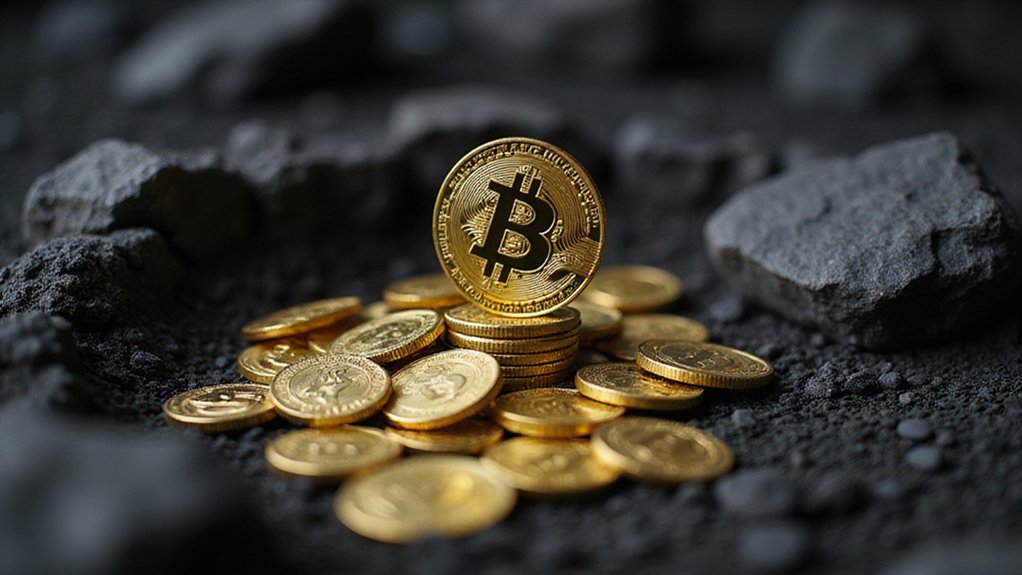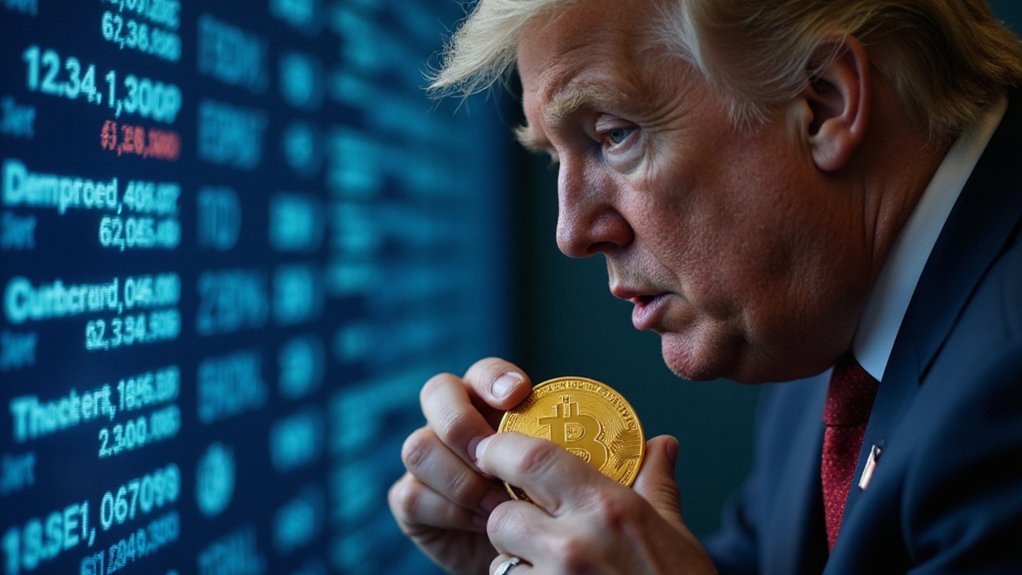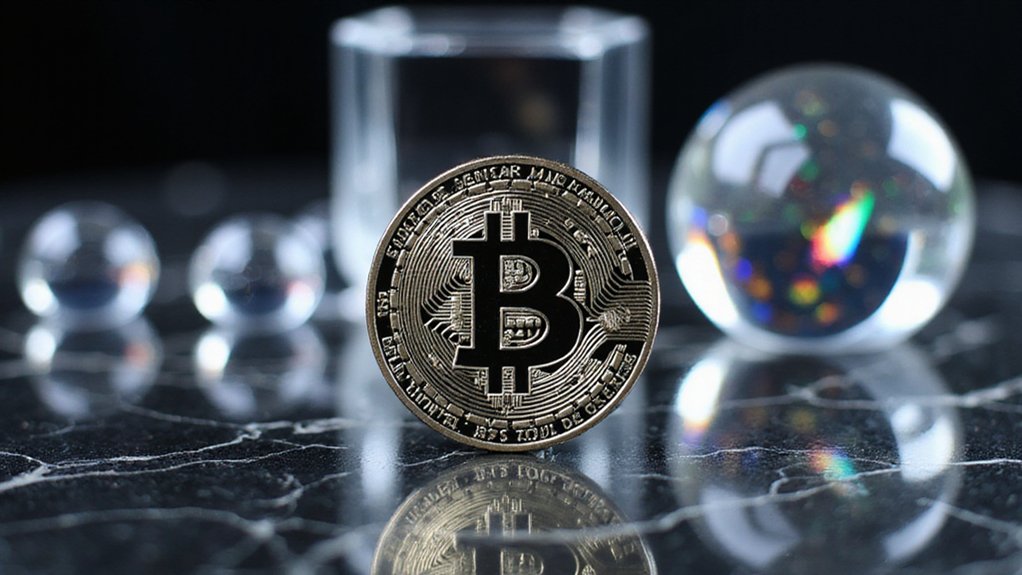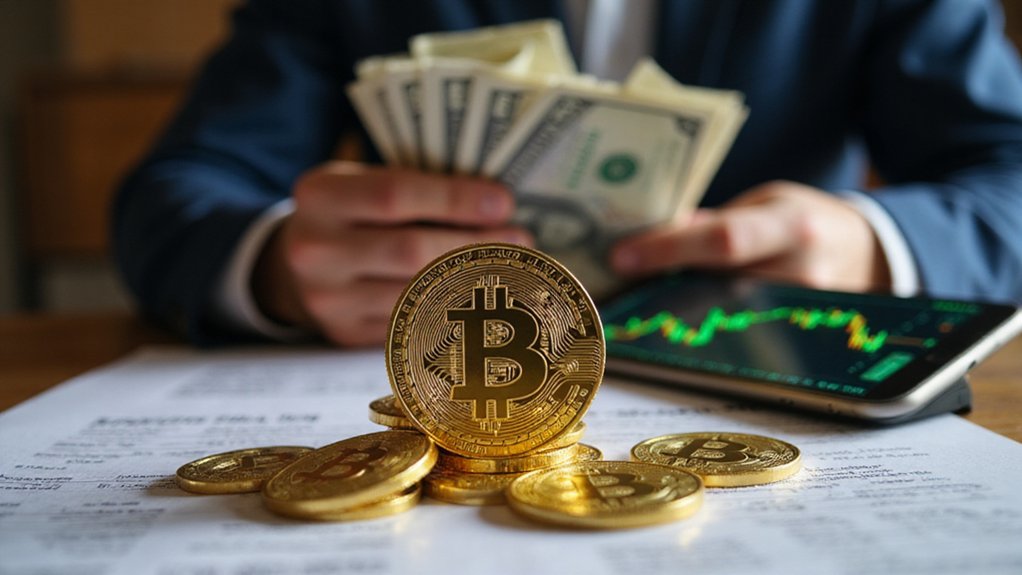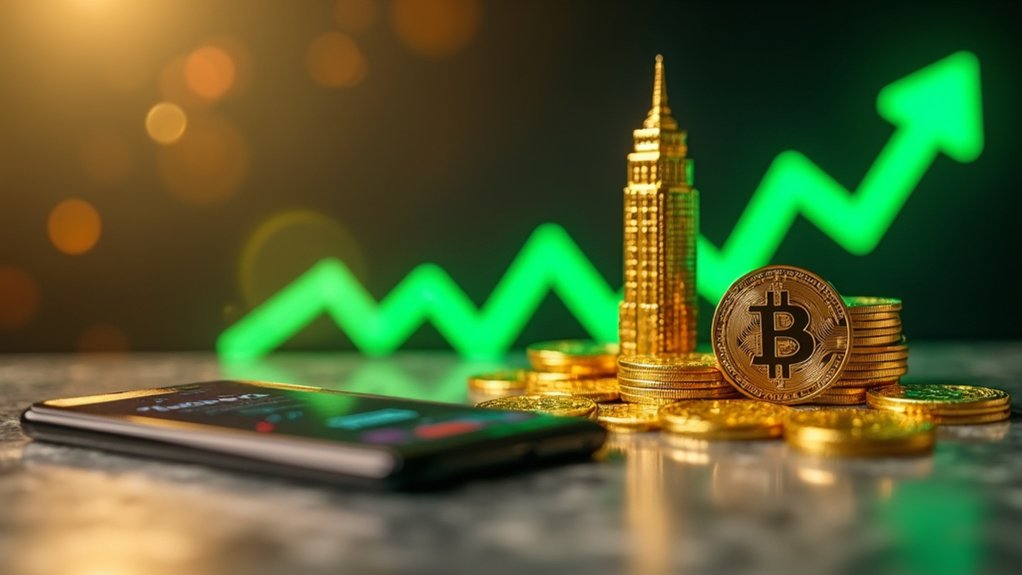While most currencies throughout history have suffered the inevitable fate of debasement—whether through clipping coins, printing presses, or digital keystrokes—Bitcoin presents itself as the monetary equivalent of a mathematical theorem, with its 21 million coin limit hardcoded into existence like an immutable law of physics.
This scarcity mechanism operates through an elegant mathematical progression: block rewards halve every 210,000 blocks (roughly four years), creating an exponential decay formula that began with 50 bitcoin per block and continues shrinking toward zero. By December 2024, approximately 94% of bitcoin’s total supply had been mined, with the inflation rate dropping to 1.7%—a stark contrast to fiat currencies where central banks can conjure trillions with spreadsheet entries. With 19.8 million of the capped 21 million coins already in circulation, the remaining supply grows increasingly scarce.
Bitcoin’s exponential decay formula transforms scarcity from economic theory into mathematical certainty, while fiat currencies dissolve through digital monetary alchemy.
The halving events themselves create fascinating market dynamics that economists might describe as “predictable unpredictability.” While the timing is mathematically certain, price impacts typically manifest with curious delays—often surfacing about a year post-halving as markets digest the reduced supply shock. Previous cycles have demonstrated progressive price appreciation, though whether correlation equals causation remains the eternal question plaguing financial analysis.
Perhaps more intriguingly, these halvings force an evolutionary pressure on miners who suddenly find their revenue streams sliced in half overnight. The result? A Darwinian process where only the most efficient operations survive, driving technological innovation while some miners frantically liquidate holdings to cover operational costs—creating temporary market turbulence that seasoned observers have learned to anticipate. These mining complexities serve as natural barriers that create stable supply patterns, much like the physical constraints that govern gold extraction from the earth.
Yet beneath this mechanical precision lies a profound philosophical debate: what happens if the 21 million limit were somehow altered? The mere suggestion sends ripples through bitcoin communities, and for good reason. This cap represents more than numerical constraint—it embodies the entire value proposition of programmatic scarcity in a world drowning in monetary expansion. The network’s 99.98% uptime since inception demonstrates the stability and reliability that reinforces confidence in these monetary rules.
Changing this fundamental rule would constitute monetary vandalism of the highest order, potentially triggering market chaos through sudden inflation expectations and catastrophic loss of confidence. The mathematical certainty that underpins bitcoin’s store-of-value narrative would evaporate, leaving investors holding what amounts to just another manipulable digital token.
Sometimes the most radical innovation lies not in endless flexibility, but in absolute, immutable constraint.
